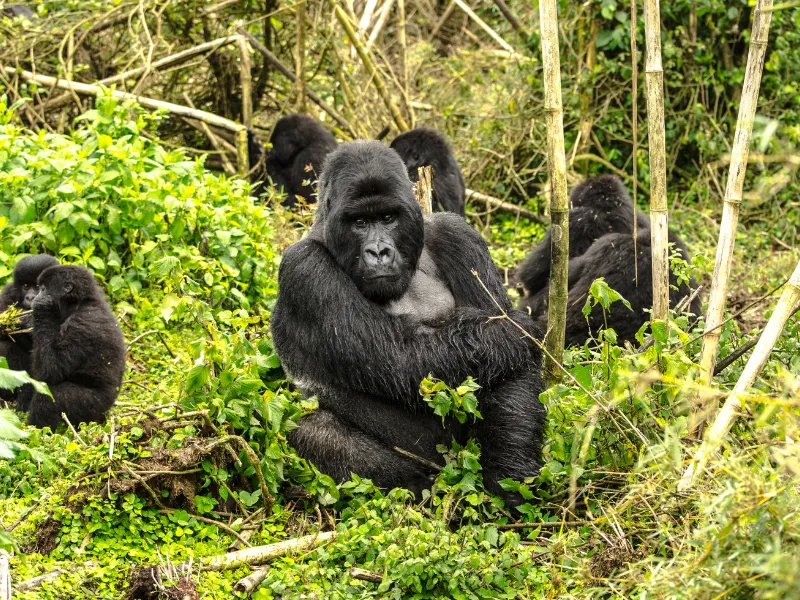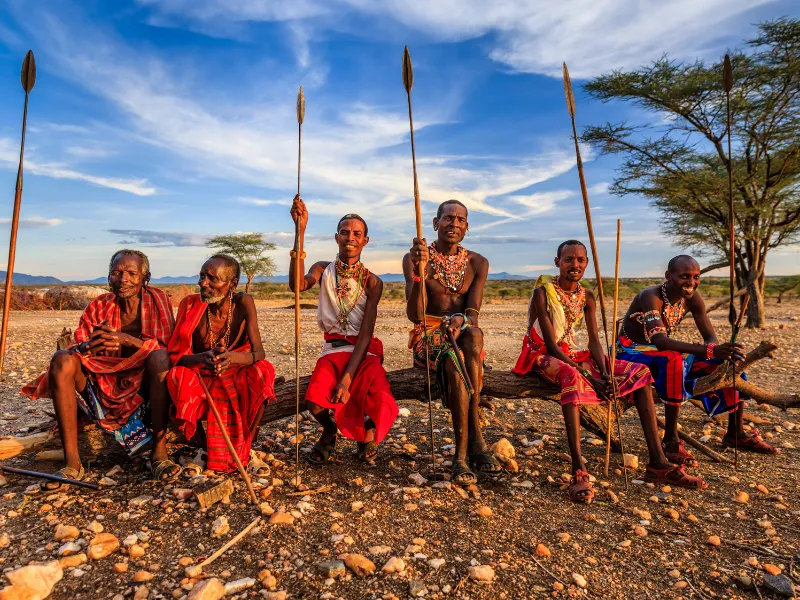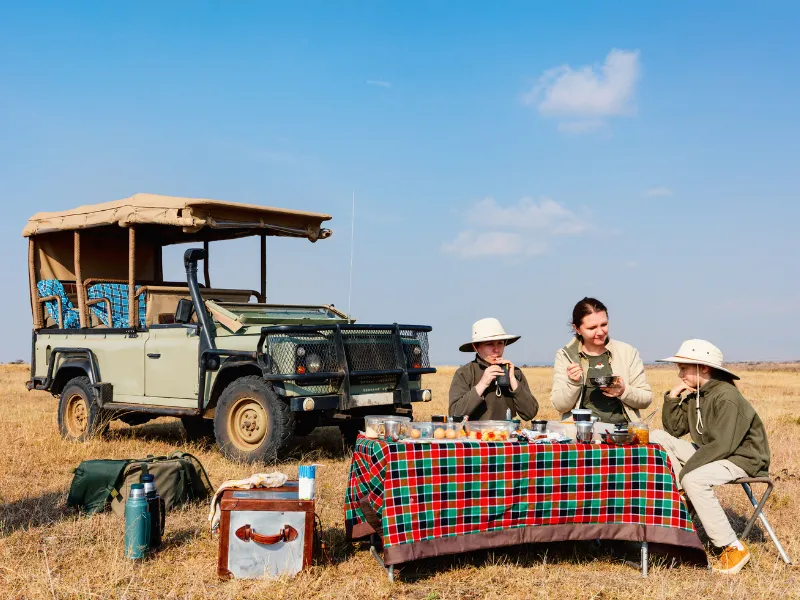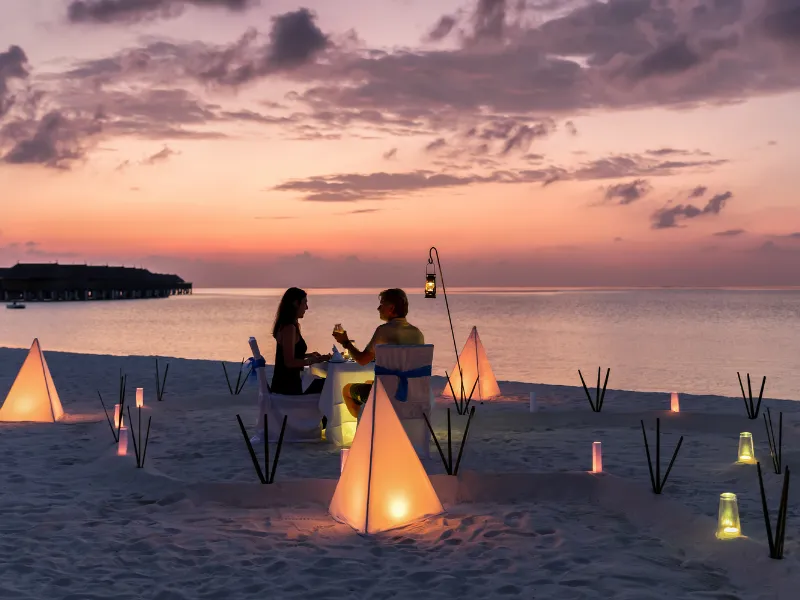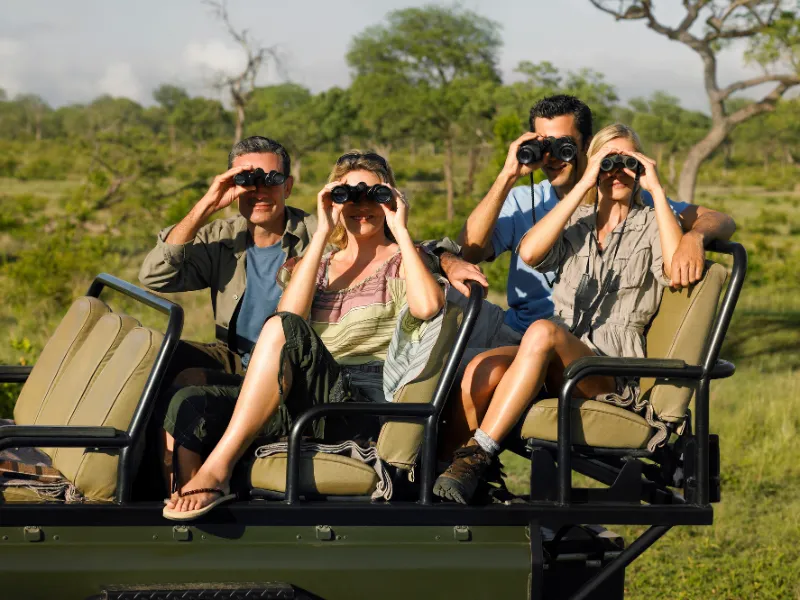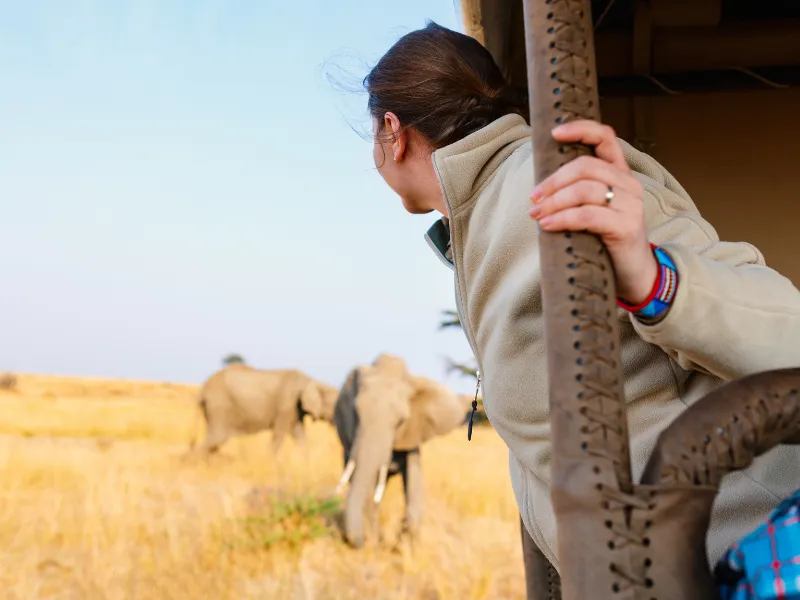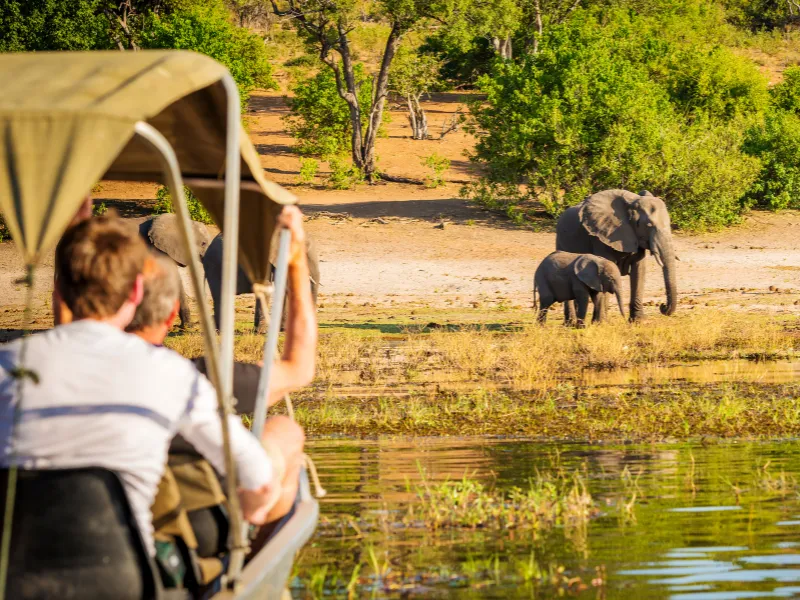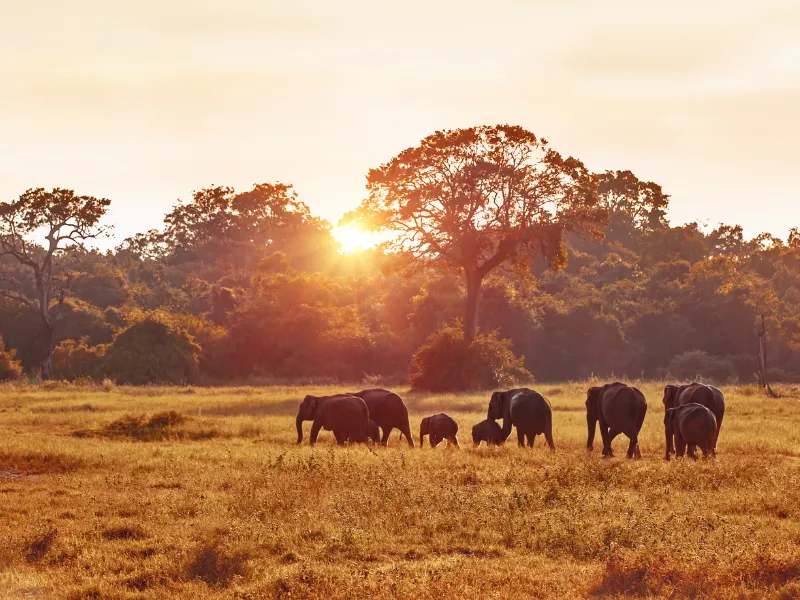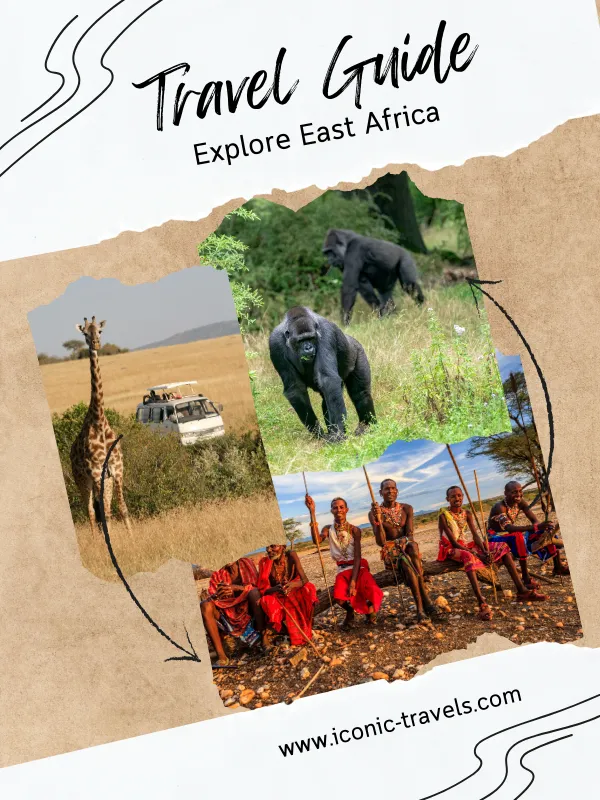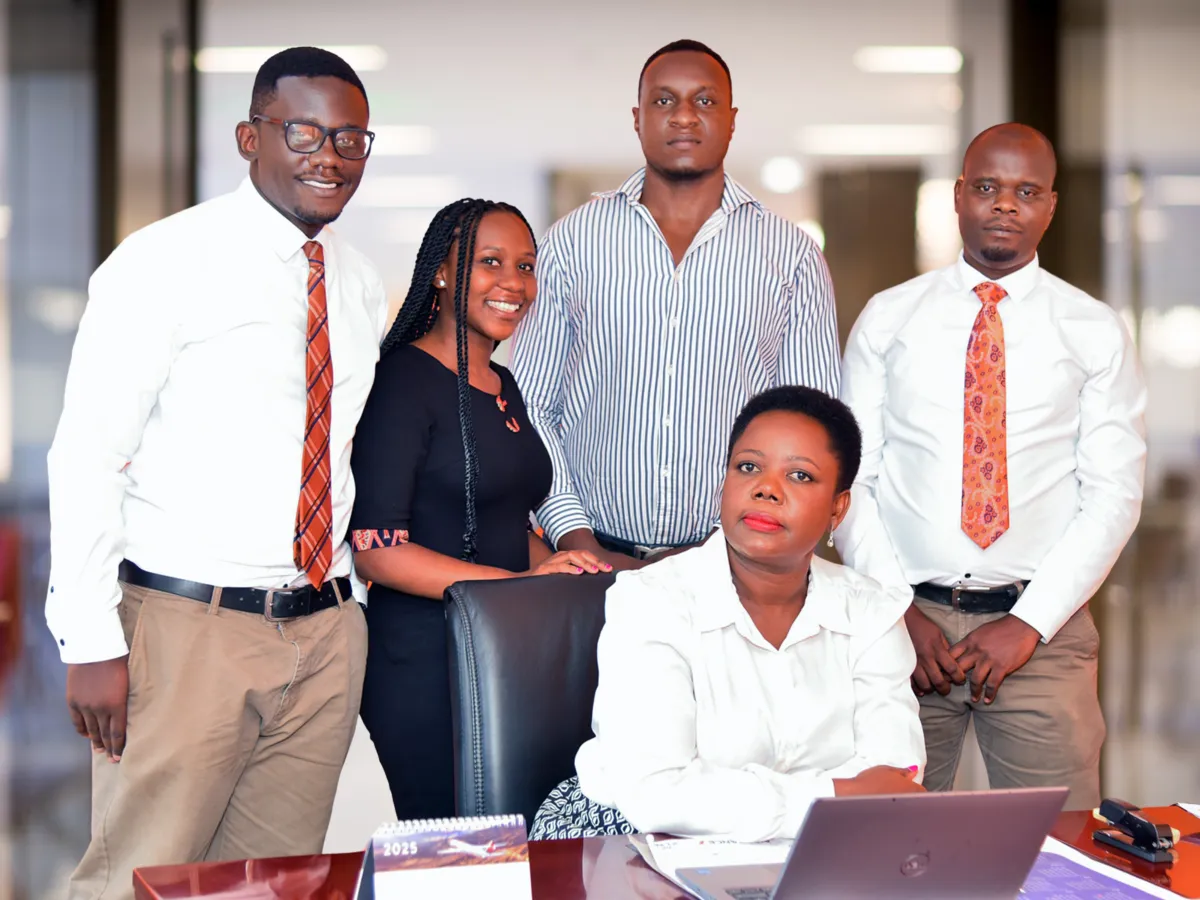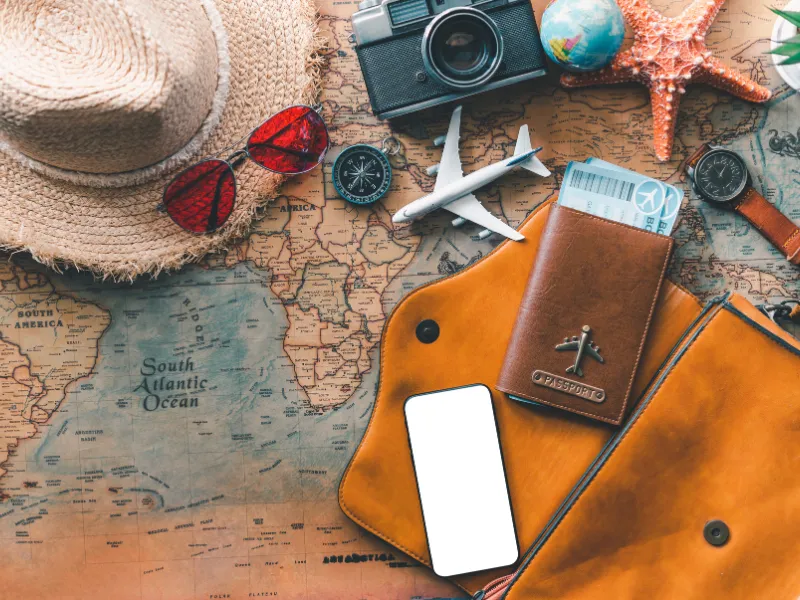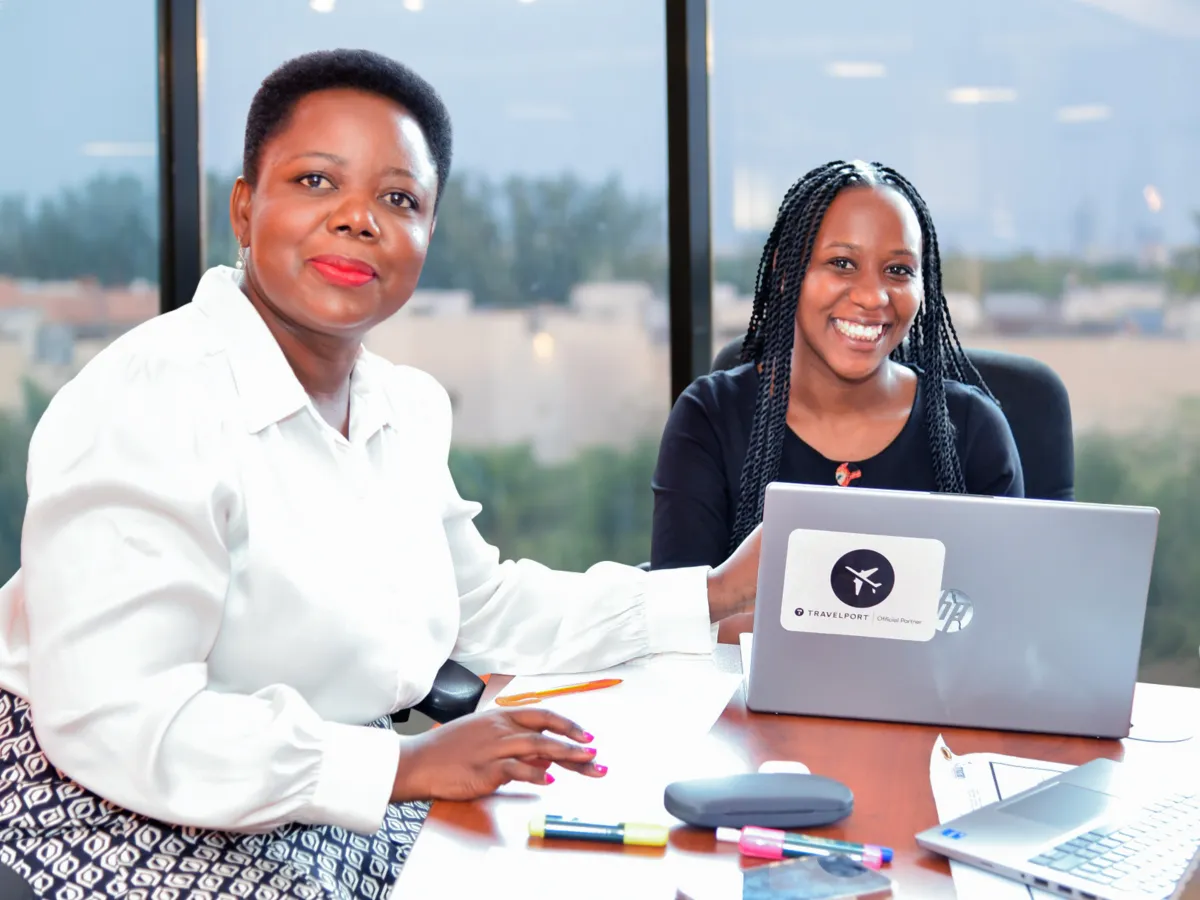Gorilla Trekking
Annually, we expertly match over 100,000 proactive individuals seeking expertise in finance, lending, and claims management with experienced advisors and brokers.
Gorilla Trekking: A Definitive Guide for the Discerning Traveler
Executive Summary: The Unrivaled Primate Encounter
Gorilla trekking represents one of the most profound and sought-after wildlife encounters on Earth, a testament to the success of decades of conservation efforts. For the discerning traveler, this is not merely a hike but a seamless, private, and deeply meaningful journey. This report synthesizes expert analysis and ground-level intelligence to provide a definitive guide to the luxury gorilla trekking experience in East Africa, focusing on the key strategic and logistical decisions that shape an unforgettable trip.
The primary choice for a trek rests between Rwanda and Uganda, each offering a distinct value proposition. Rwanda provides unparalleled convenience and a concentration of ultra-luxe lodges, positioning it as the premier choice for clients who prioritize a polished, effortless experience. Uganda, by contrast, offers a more rugged, value-driven alternative with a broader array of activities and a unique, intimate charm. In either destination, success is virtually guaranteed, with sighting rates consistently exceeding 95%. The optimal journey is a product of careful planning, from securing highly-coveted permits well in advance to crafting an itinerary that harmonizes the thrill of the trek with other iconic African experiences, from Big Five safaris to tranquil lakeside retreats. The following analysis provides a comprehensive framework for navigating these choices, ensuring the trek is not just successful, but truly a journey without compromise.
Chapter 1: The Strategic Choice - Rwanda vs. Uganda
The decision between Rwanda and Uganda is the most crucial of a luxury gorilla trekking journey. While both countries offer a world-class experience, they are fundamentally different in their approach to high-end tourism. This chapter provides a detailed, side-by-side comparison to illuminate these distinctions and guide the selection process.
Permit & Cost Analysis
The cost of a gorilla trekking permit is the most significant financial component of the trip and a clear differentiator between the two countries. In Rwanda, a permit for a single one-hour encounter with a gorilla family is a premium US $1,500 per person. This price, which was set in 2017, reflects a deliberate, high-end tourism strategy that curates a more exclusive, less-crowded experience. It functions as a form of demand control, limiting visitor numbers and generating substantial revenue that is reinvested into gorilla conservation and supporting local communities. This approach has fostered a virtuous cycle of luxury, conservation success, and upscale infrastructure development.
In contrast, Uganda offers a more accessible price point, with a standard gorilla trekking permit costing US $800 per person as of July 2024. This makes Uganda an ideal choice for travelers seeking exceptional value. Furthermore, Uganda offers a unique and highly sought-after “Gorilla Habituation Experience” permit for US $1,500, a price identical to Rwanda’s standard trek. This special permit allows for an extended four-hour visit with gorillas under habituation, providing a longer and more immersive encounter that appeals to a different kind of enthusiast. The existence of this parallel offering demonstrates a nuanced understanding of the luxury market, providing a high-end, time-rich option that competes directly with Rwanda's premium pricing model.
The availability of permits also plays a role in the planning process. While both countries strictly control permit numbers (approximately 96 per day in Rwanda and 80 per day in Uganda), Uganda's larger supply across two parks can sometimes make last-minute permits easier to obtain than in Rwanda, where limited slots often sell out far in advance during peak season.
Accessibility & Travel Logistics
For the time-conscious traveler, Rwanda's superior accessibility is a significant advantage. The country’s main international airport, Kigali International, is only a 2.5-hour paved drive from Volcanoes National Park. This proximity allows for a remarkably streamlined itinerary where a trek can be performed just one day after landing, making a short, high-impact trip feasible even for business travelers. The ease of access minimizes travel fatigue and maximizes time spent on the experience itself.
Conversely, Uganda’s gorilla parks, Bwindi Impenetrable National Park and Mgahinga National Park, are located in the far southwestern corner of the country, over 500 kilometers from the primary entry point of Entebbe. The journey to these parks typically requires a full day of travel, either via an 8-10 hour drive on rough roads or a domestic flight on a light aircraft. For a luxury traveler, this additional travel time and logistical complexity can be a considerable drawback, making Rwanda a more attractive option for those prioritizing a swift and seamless journey. While a domestic flight cuts transit time, it still adds a layer of travel that is absent from a Rwanda itinerary.
Luxury Lodge & Amenity Landscape
The luxury accommodation landscape in each country reflects its overall tourism strategy. Rwanda has emerged as a premier luxury travel hot spot, with a wider selection of high-end lodge options near the gorilla park. Flagship properties such as Wilderness Bisate, Singita Kwitonda, and One&Only Gorilla’s Nest offer an ultra-luxe experience with amenities like private plunge pools, gourmet cuisine, and spa services. The investment in these high-end, brand-name properties is a direct consequence of Rwanda's premium-pricing model, creating a portfolio of accommodations that are destinations in themselves.
Uganda's luxury accommodation scene is more limited in number but boasts its own unique character. While lodges like Clouds Mountain Gorilla Lodge and Sanctuary Gorilla Forest Camp provide exceptional comfort and intimacy, they often exude a more traditional "explorer" or "glamping" vibe compared to the polished opulence of Rwanda's properties. These lodges offer a deep connection to the land and often incorporate strong elements of community engagement. The choice between the two, therefore, is not simply a matter of quantity but of the style of luxury preferred—whether a client desires a vast selection of ultra-modern amenities or a more intimate, ruggedly elegant sanctuary.
The Trekking Experience
While the core experience of spending a magical hour with a habituated gorilla family is similar in both countries, the physical demands of the trek are distinct. The challenge of the hike is not a simple metric; it represents a trade-off between two different physical exertions.
In Rwanda, the trek takes place in Volcanoes National Park, part of the Virunga Volcano range. The terrain is at a higher elevation (2,500–3,300 meters), where thinner air can make physical exertion feel more intense. The forest is generally less dense underfoot, and the trails are often more open and less muddy than in Uganda. While the slopes can be steep, many visitors find the footing to be more stable. The primary challenge is cardiovascular, requiring a certain level of acclimatization, which can be aided by a warm-up activity like a golden monkey trek on a preceding day.
In Uganda, trekking occurs in Bwindi Impenetrable National Park, a dense, hilly jungle. As the park's name suggests, the trails here can be famously muddy, steep, and root-crossed, often requiring guides to hack through thick foliage. The lower elevation of Bwindi (1,160–2,600 meters) means that altitude effects are generally not a concern, and no acclimatization is needed. For individuals with mobility concerns or a fear of slippery conditions, this terrain-based challenge may be more daunting than Rwanda’s altitude-based exertion.
In both countries, a slow pace is maintained to accommodate all guests, and porters are available for hire to assist with bags and stability on difficult sections of the trail.
Beyond the Trek: A Comprehensive Itinerary
A key consideration for a longer journey is the opportunity to combine gorilla trekking with other activities.
Rwanda, despite its small size, offers a number of premium experiences in a compact geographical area. A client can add a Big Five safari in Akagera National Park (which has seen a successful reintroduction of lions and rhinos), a chimpanzee trekking excursion in Nyungwe Forest, or a relaxing retreat at Lake Kivu. The country’s excellent road infrastructure and close proximity of these destinations make it easy to see a lot in a short time. The recent, successful reintroduction of 70 southern white rhinos to Akagera National Park in 2025 further cements its status as a credible Big Five safari destination, making a Rwanda-only trip a complete and compelling option.
Uganda is a larger and more diverse country, rightly called the "Pearl of Africa". It offers an incredible variety of experiences, from savannah safaris in Queen Elizabeth National Park or Murchison Falls National Park to chimpanzee trekking in Kibale Forest and adventure sports at the source of the Nile. While Uganda’s wildlife viewing may be more spread out, it offers a wider range of activities to be paired with a trek for a longer, more adventurous safari. For example, rhinos are only found in the Ziwa Sanctuary and not free-roaming in the national parks, which adds another logistical step to achieving a Big Five sighting. This diversity makes Uganda an excellent choice for travelers with more time who want to explore a variety of habitats and cultural experiences.
Conclusion: Which Is Right for You?
There is no poor choice when it comes to gorilla trekking in Rwanda or Uganda. The decision ultimately rests on a client's specific priorities. A traveler who values convenience, a wider selection of high-end lodges, and a shorter, more polished experience may find Rwanda to be the perfect fit. Conversely, a traveler who prioritizes permit value, a broader diversity of wildlife and cultural experiences, and a more adventurous ambiance may prefer Uganda.
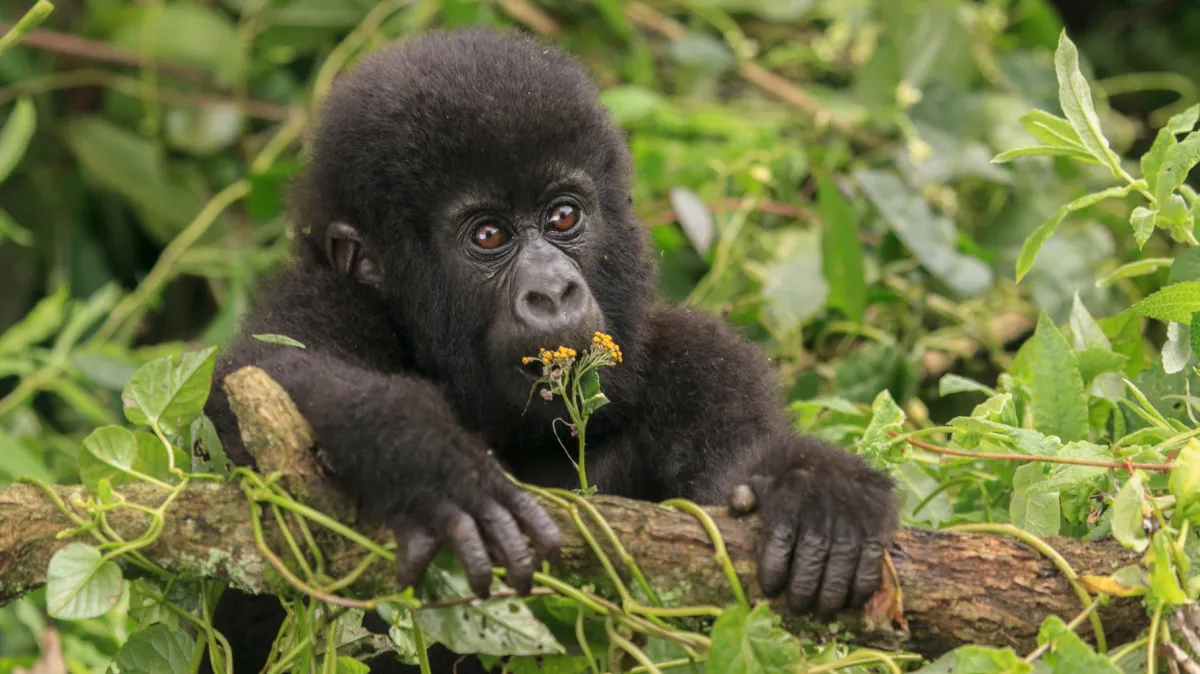
Uganda
Bwindi Impenetrable National Park: Bwindi is home to nearly half of the world’s remaining mountain gorillas, distributed across several habituated families. The park’s name hints at its character: dense forest, steep ridges, and a true sense of wild. Each trek begins with a safety briefing and ends with a certificate of completion—a memento of a life-changing hour.

Rwanda
Volcanoes National Park: Part of the Virunga Mountains, this is Rwanda’s flagship destination for gorilla trekking. The park is known for its relatively short treks, well-established infrastructure, and high-end eco-lodges nestled just outside the park gate. Volcanoes NP is ideal for travelers seeking a luxury safari extension or a high-comfort, high-impact experience.
Chapter 2: The Art of Preparation - Logistics, Fitness, and Etiquette
Gorilla trekking is a bucket-list adventure that requires careful logistical planning and a realistic understanding of the experience. This section provides an in-depth guide to preparing for the journey, from securing permits to what to expect on the trail.
Securing Your Permit
A gorilla permit is the non-negotiable entry ticket to visit a gorilla family on a specific date. These permits are strictly controlled to protect the animals and are non-transferable. Due to the high demand, permits often sell out six to twelve months in advance, especially during the peak seasons of June to September and December to February. Navigating this process is a key service of a luxury travel operator, which has direct connections to the Rwanda Development Board and Uganda Wildlife Authority to secure permits on a client's behalf. The expertise of a planner is to handle the paperwork, payment, and coordination, removing the uncertainty and stress from the client. The minimum age to participate in a gorilla trek is strictly 15 years old, with no exceptions. This rule is in place to ensure the safety of both visitors and the gorillas and is a crucial consideration for families planning a trip.
Physical Preparation and the Trek Itself
Gorilla trekking is a physical activity, but it is not an athletic feat reserved for marathon runners. It is best described as a moderate hike through hilly, forested terrain that can last anywhere from 30 minutes to more than four hours, depending on where the gorilla family has moved. The pace is slow and deliberate, with frequent stops to rest and adjust to the altitude or terrain. The guides are trained to adjust to the slowest person in the group, ensuring that everyone can complete the trek at a comfortable pace. For a fit and healthy individual who can walk on uneven ground for a few hours, the trek is very achievable.
For added comfort and support, hiring a porter is highly recommended and costs approximately US $20-25 per trek. Porters, often local community members, can carry a backpack and assist with tricky sections of the trail, providing both physical support to the client and direct economic support to the local community. For travelers with limited mobility, a sedan chair service is available, where a team of strong porters can carry a guest through the forest, making the experience accessible to those who cannot hike long distances. These support options ensure that the trek is a rewarding and manageable experience for a wide range of visitors.
Safety, Conduct, and Etiquette
Upon finding the gorilla family, visitors are subject to a strict set of rules designed to ensure a safe and respectful encounter for both humans and animals. A minimum distance of seven meters must be maintained from the gorillas. While the gorillas are habituated and generally non-aggressive towards humans, they are still wild animals. Guides will instruct visitors on how to behave, including what to do if a gorilla makes a charging display, which is almost always a bluff. Flash photography is strictly forbidden as it can disturb the animals. Visitors are also asked to speak in whispers and to wear a mask during the one-hour visit to prevent the transmission of diseases to the gorillas. These protocols ensure that the encounter is an intimate and profound observation of a family in its natural habitat rather than a disruptive intrusion. The presence of highly trained park rangers and guides, who are prepared for any eventuality, allows guests to relax and fully immerse themselves in the wonder of the experience.
Packing for the Mountains
Proper gear is essential for a successful and comfortable trek. The following list of items is a core part of the preparation and is highly recommended.
Luxury Gorilla Trekking — Packing List
| Item | Purpose |
|---|
Chapter 3: Curated Journeys - Integrated Itinerary Pairings
For a luxury traveler, gorilla trekking is often the highlight of a broader African adventure. The following curated journeys represent proven itineraries that seamlessly combine a gorilla encounter with other iconic experiences.
Route 1: The Primate & Plains Grandeur (Rwanda + Tanzania)
This itinerary offers the quintessential and most dramatic combination of East Africa’s natural wonders. The journey begins in Rwanda with a gorilla trek, an intimate and visceral encounter in the jungle's heart. The experience is followed by a seamless regional flight from Kigali to Tanzania's Serengeti, a vast savannah teeming with wildlife. The contrast between the humid, mountainous rainforest and the expansive, golden plains of the Serengeti is profound and visually striking.
The timing of this route is strategic. The best time to visit both countries is during the long dry season from June to September. This period offers the most comfortable trekking conditions in Rwanda and coincides with the Great Migration's most dramatic stage in the Serengeti, as millions of wildebeest and zebras cross the Mara River in search of fresh grazing. For the client, this itinerary provides two bucket-list experiences in one trip, from the intimate, once-in-a-lifetime gorilla sighting to the high-octane spectacle of the Great Migration and the dense populations of lions, leopards, and elephants. It is the definitive grand tour of East Africa's most iconic wildlife and is a hallmark of a meticulously planned luxury safari.
Route 2: The Authentic Explorer (Uganda + Kenya)
This route appeals to the traveler who desires a multi-country experience that combines the rugged charm of Uganda with the classic safari landscapes of Kenya's Masai Mara. The journey begins with a gorilla trek in Uganda's Bwindi Impenetrable National Park, a trek known for its dense jungle and authentic feel. The itinerary then flows naturally into Kenya, a land of open savannahs and a legendary concentration of big cats.
A critical recommendation for this route is to ensure that a portion of the time in the Masai Mara is spent in a private conservancy, such as Olare Motorogi Conservancy, which adjoins the main reserve. These conservancies strictly limit visitor numbers, allowing for exclusive, crowd-free game drives and the unique opportunity for off-road driving, night drives, and guided bush walks, which are typically forbidden in the national parks. This strategic choice of location ensures that a client experiences the immense wildlife of the Mara without the a company of a crowd of vehicles, transforming the experience from a shared spectacle into a private viewing. This itinerary is perfect for the client who wants to experience the quintessential East African safari with a dose of adventure and a focus on exclusivity.
Route 3: The Trek & Retreat (Rwanda + Lake Kivu)
For travelers with limited time or those who prefer to remain within a single country, this itinerary offers a perfect balance of intense adventure and peaceful relaxation. The journey begins with a gorilla trek in Volcanoes National Park, a physically and emotionally profound experience. The second half of the trip is dedicated to unwinding at the picturesque Lake Kivu, one of Africa's Great Lakes, known for its scenic blue waters and terraced hills.
The travel between these two locations is seamless, with a picturesque three-hour drive that winds through Rwanda's famous "Land of a Thousand Hills". At Lake Kivu, a client can enjoy a leisurely pace with activities such as sunset cruises, kayaking, coffee plantation tours, or simply lounging by the water to reflect on the adventure. This itinerary is an ideal choice for a honeymoon or a celebratory trip, as it allows for a luxurious de-escalation from the intensity of the trek. It provides a unique opportunity to recharge and savor the moments in a tranquil and beautiful setting, ensuring the trip concludes with a sense of calm and rejuvenation.
Chapter 4: The Lodges - A Connoisseur's Guide to Luxury Accommodations
The choice of lodge is paramount to a luxury gorilla trekking experience. It serves as a sanctuary after a day of hiking, offering comfort, fine dining, and a deep connection to the environment. The following are a few of the top properties in each country, each with a distinct character and appeal.
Recommended Luxury Lodge Summary
| Lodge | Country | Atmosphere/Vibe | Key Features | Child Policy |
|---|
Wilderness Bisate Lodge (Rwanda)
Located on a reforested hillside, Wilderness Bisate is an architectural masterpiece known for its distinctive spherical thatched villas that resemble giant birds' nests. The lodge is a testament to eco-conscious luxury, deeply involved in conservation efforts and reforestation projects. Each villa is a sanctuary with a central fireplace, soaking tub, and private deck offering panoramic views of the Virunga volcanoes. The atmosphere is one of refined tranquility, with farm-to-table dining, personal butlers, and thoughtful post-trek services like a complimentary massage. The lodge is a perfect fit for honeymooners or travelers who seek the highest standard of luxury blended with a genuine commitment to conservation. This lodge welcomes children aged 15 and above.
Singita Kwitonda Lodge (Rwanda)
Singita Kwitonda Lodge redefined luxury in the Volcanoes region upon its opening in 2019. It is a contemporary masterpiece featuring sleek, modern architecture crafted from volcanic stone and bamboo. The lodge is ultra-exclusive and tranquil, offering nine luxurious villas, each with a private heated plunge pool and indoor/outdoor fireplaces. The focus here is on privacy, wellness, and top-tier culinary experiences. Singita's commitment to reforestation is notable, with an on-site nursery growing thousands of indigenous trees. The lodge welcomes children of all ages, though the gorilla trekking activity itself is restricted to those 15 and older by park regulations.
Sabyinyo Silverback Lodge (Rwanda)
As Rwanda's first community-owned lodge, Sabyinyo Silverback Lodge offers a blend of rustic elegance and heartfelt, personalized service. Situated in the foothills of Volcanoes National Park, its cottages feature charming terra cotta roofs, fireplaces, and verandas with stunning views of the volcanoes. The atmosphere is warm and inviting, earning it a reputation as a "home away from home" for many guests. The lodge's proceeds directly support local community initiatives, and the staff is known for their exceptional hospitality. This lodge welcomes children of all ages and has a family cottage designed to accommodate them.
Clouds Mountain Gorilla Lodge (Uganda)
Perched high on a ridge in southern Bwindi, Clouds Mountain Gorilla Lodge lives up to its name, often appearing to float above a sea of clouds. It is an intimate lodge with a sense of sanctuary, offering eight stone cottages with personal butlers and sweeping views of the Virunga volcanoes. The atmosphere here is one of solitude and jaw-dropping natural beauty, providing a perfect place for guests to unwind after the physical demands of the trek. The lodge offers luxury with a deep connection to the land and local community. Children of all ages are welcome at the lodge, and age-appropriate activities can be arranged for those under 15 while adults are trekking.
Sanctuary Gorilla Forest Camp (Uganda)
Sanctuary Gorilla Forest Camp offers an enchanting "glamping" experience for those who want to feel truly immersed in the rainforest. Located directly inside Bwindi National Park, just steps from the trailhead, the camp's most famous feature is that gorillas sometimes wander directly through the property. The camp consists of eight luxury tents, each equipped with a spacious interior and a bathtub. The atmosphere is that of an authentic safari, where the line between the camp and the wilderness is blurred. The camp's unique location and immersive feel make it an ideal choice for travelers who prioritize proximity to wildlife. Sanctuary Gorilla Forest Camp welcomes children of all ages.
Chapter 5: Answering Key Questions
This section provides concise, expert-level answers to the most common questions from discerning travelers, offering crucial information for confident travel planning.
When is the best month to go gorilla trekking?
The best months for gorilla trekking are the dry seasons: from June to September and from December to February. During these periods, there is less rain, and the trails are drier and more manageable. This is also the high season, and permits are in the highest demand. Traveling in the wet seasons (March to May and October to November) can be rewarding, as the landscape is lush, the air is clearer for photography, and the number of visitors is lower. While the trails will be muddier, trekking still operates daily, and there is a chance of finding gorillas at lower elevations, which could shorten the hike. Ultimately, gorilla sightings are excellent year-round, with a success rate of over 95%, so there is no bad time to go.
What are the health considerations for a gorilla trek?
All of the gorilla trekking regions in East Africa have a degree of malaria risk. The risk is generally lower in high-altitude areas like Rwanda's Volcanoes National Park and certain regions of Kenya, as mosquitoes are less prevalent there. The risk is also reduced during the dry season. Despite these variations, it is strongly recommended that all travelers take anti-malarial prophylaxis as prescribed by a doctor. Visitors should also take precautions to avoid mosquito bites by using insect repellent, wearing long sleeves and trousers in the evening, and sleeping under a mosquito net. A Yellow Fever vaccination is a mandatory requirement for entry into both Rwanda and Uganda, and a certificate of vaccination must be carried at all times. It is also recommended to be up-to-date on routine vaccines and to avoid drinking unpurified water.
Can I get a private gorilla trek or special photography permit?
Yes, for those seeking the ultimate in exclusivity, a private gorilla trek can be arranged. In Rwanda, a dedicated private trek can be purchased for a group of up to eight people for US $15,000, ensuring a completely exclusive visit with no other tourists present. In both Rwanda and Uganda, it is also possible to secure a private trek by purchasing all eight permits for a given gorilla family, which, while more costly, offers the same benefit of a dedicated encounter.
For photographers, Uganda's "Gorilla Habituation Experience" is a unique option. While not a private experience, it is an intimate one, allowing up to four tourists to spend four hours with a gorilla family under the guidance of researchers and park guides. This extended period provides an exceptional opportunity for capturing a wider range of behaviors and obtaining unique images. For clients with serious photographic requirements, a travel operator can also coordinate with guides to ensure optimal positioning for lighting and angles.
How far in advance should I book?
Given the high demand and limited number of permits, it is strongly recommended to book a luxury gorilla trekking trip six to twelve months in advance, especially for travel during the peak seasons of June to September and December to February. The limited number of high-end lodges in the gorilla regions also fills up quickly during these times. Planning well in advance ensures that permits are secured on the preferred dates and that a client's first-choice accommodations are available. Last-minute trips are sometimes possible, but they require greater flexibility with regard to dates and choice of lodge. For a trip that combines gorilla trekking with a Great Migration safari, an even earlier booking is advisable as those safari camps also require significant lead time to secure.
An experience of a lifetime
Whether you're traveling for a milestone celebration, a wildlife lover's dream, or simply to experience one of the rarest moments on Earth, gorilla trekking is a memory you’ll carry for life.
Ready to Explore More?
Our travel experts are ready to start creating your customized trip.
Destinations
Company
Follow Us
© 2025 Iconic Travels. All Rights Reserved.


